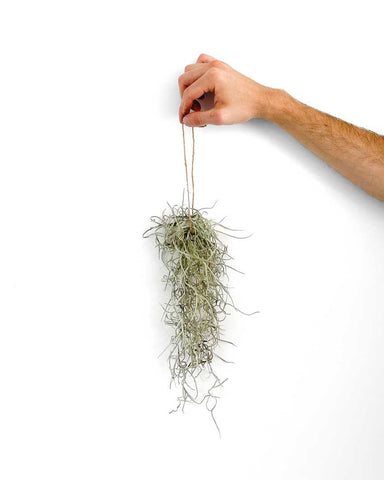Introduction
Spanish Moss, also known as Tillandsia Usneoides, is a type of flowering plant that is commonly found in the southern United States, particularly in the states of Florida and Louisiana which have high humidity and warm temperatures. Spanish moss is not actually a moss at all, it is a type of bromeliad, a type of epiphytic flowering plant that grows on trees, shrubs, and other plants.
General Care
Spanish Moss is relatively easy to care for, and can be done with just a few simple steps. One of the most important things to understand about Spanish moss is that it is an epiphyte, which means that it grows on other plants rather than in the ground. Meaning that it doesn’t need soil or plant pots to grow, but rather it does need a host plant or something else to attach itself to. The most common host plants for Spanish moss are trees, particularly oak trees, but it can also be found on other plants like shrubs and even telephone poles.
1. Light -
The first thing you need to do is make sure that the plant is getting enough light. Spanish moss prefers bright, indirect sunlight, so it is best to place it in a location where it will receive plenty of light but not be directly in the sun. This mimics its natural environment, growing underneath trees and near waterways, ideal conditions for an indoor plant. It is also possible to grow this plant outdoor in a shady area.
2. Water -
You’ll need to make sure that the plant is getting enough moisture. Spanish moss is a plant that loves moisture, which it absorbs from the air and rain. It is important to water it regularly to keep it healthy. You can do this by misting the plant with water on a regular basis, or by placing it in a location where it will receive regular moisture from the air, such as near a humidifier or in a bathroom or laundry. Another easy way to water it is by submerging the whole plant in a bucket of water for 15 minutes and then shaking off the excess. The frequency of watering will depend on the temperature and humidity. If it is hot and dry you’ll need to water your plants more often. A good rule is to let the plant dry between each water as overwatering causes rot.

3. Temperature and Humidity -
Spanish moss grows best in warm, humid environments with temperatures ranging from 21-32°C. It can tolerate some cold temperatures, but it is not frost-tolerant and should be protected from lows. Spanish moss thrives with high levels of moisture in the air. It can be grown indoors or outdoors, but it will do best in a location with high humidity, such as a greenhouse or a bathroom with a plant humidifier.
4. Soil and Fertiliser -
Spanish moss is a type of epiphyte, which means that it gets its nutrients from the air and from the debris that accumulates around it. To help the plant get the nutrients it needs, you can add a small amount of fertiliser to the water when you mist the plant, or you can apply a slow-release fertiliser to the plant once a month.
5. Maintenance -
Spanish moss does not require much maintenance once it is established. It should be watered regularly, but it is important to avoid overwatering as the plant is susceptible to rot. Spanish moss should be trimmed occasionally to remove any dead or damaged parts.

How to propagate Spanish Moss
Spanish is a relatively easy plant to propagate. Its ability to propagate quickly and ease comes from how it has adapted to living in its environment. There is one main method which we recommend that is extremely easy and has a very high success rates.
6. Cuttings and Separation -
Spanish moss can be propagated by breaking off small pieces of the plant and attaching them to a new host plant or a piece of wood using a wire or string. A good tip is to keep any trimming you may have and use them for propagation. It is also possible to propagate Spanish moss from seeds, but this method is less common and is significantly more difficult and time-consuming.
Summary
Overall, Spanish moss is a low-maintenance plant that is well-suited for warm, humid environments. It is a popular choice for use in floral arrangements and as a decorative element in gardens and other outdoor spaces.



